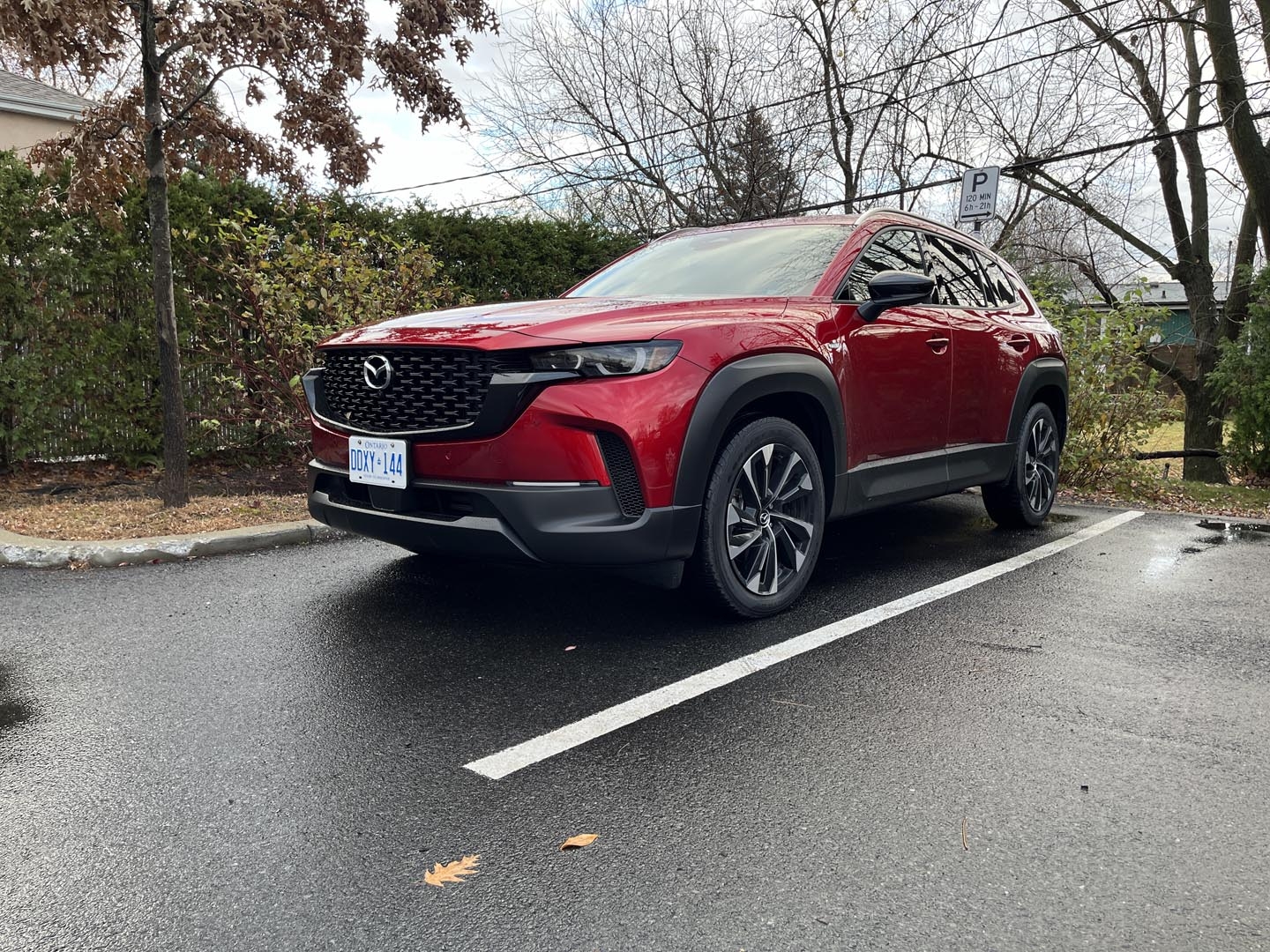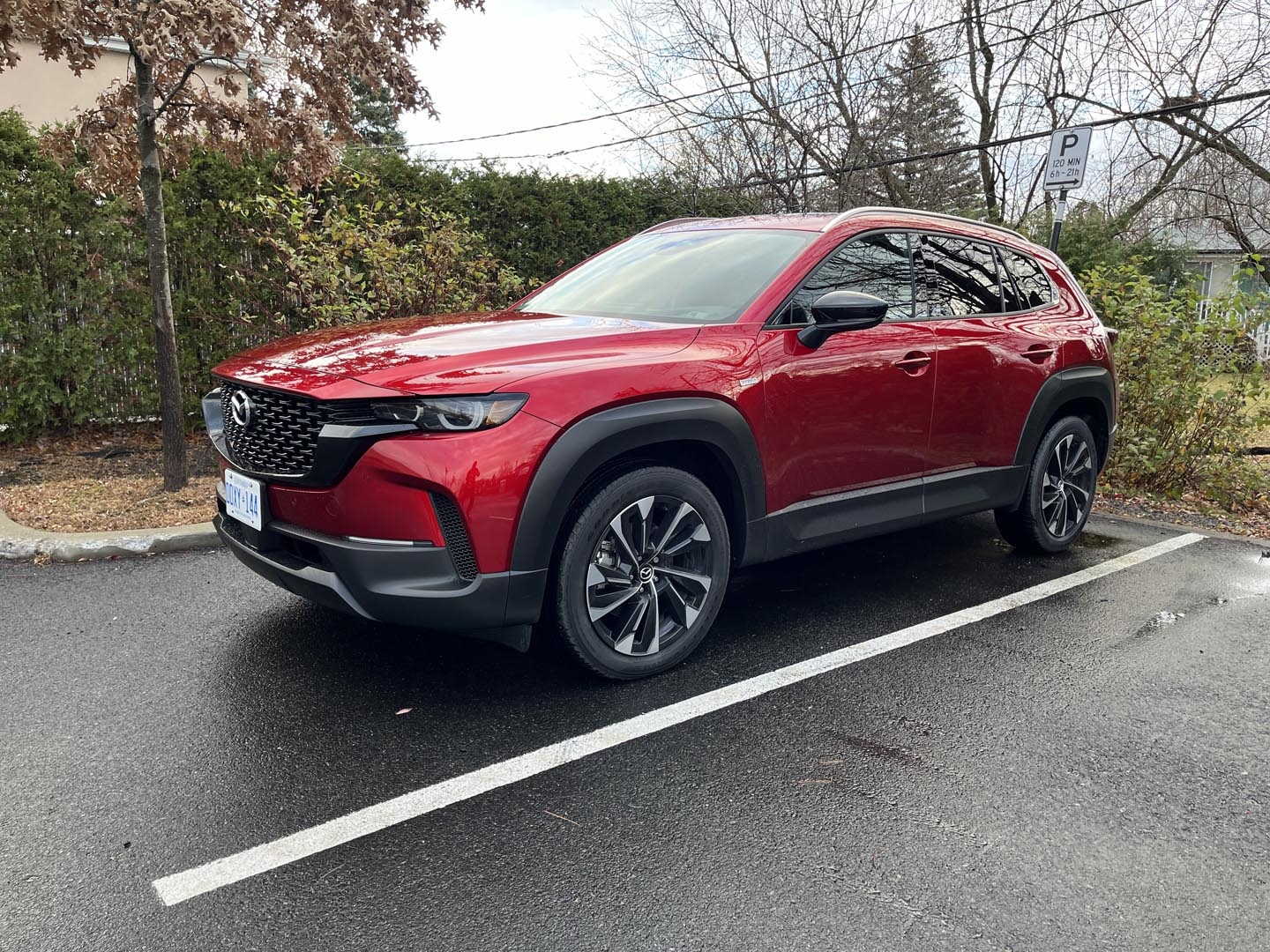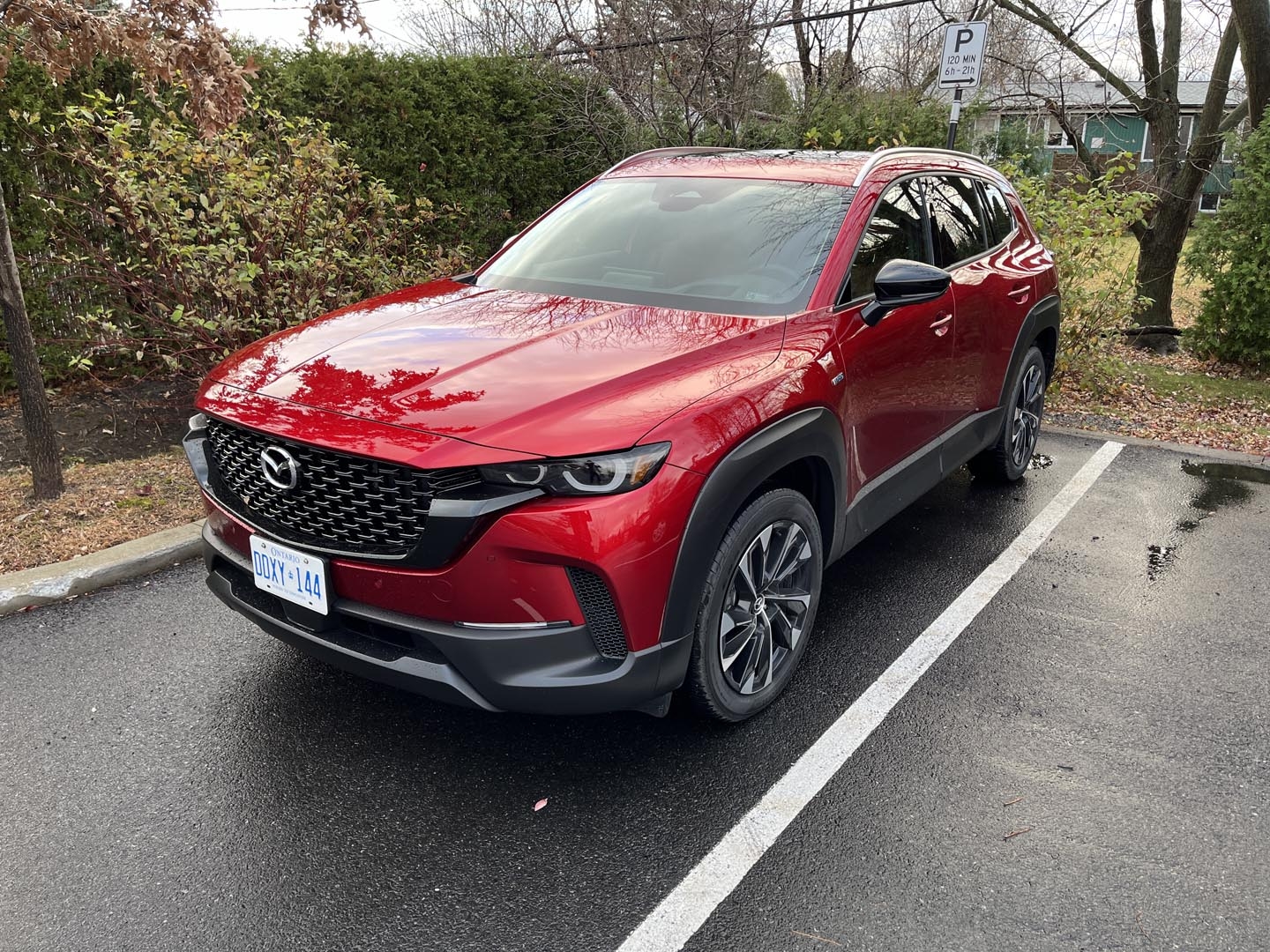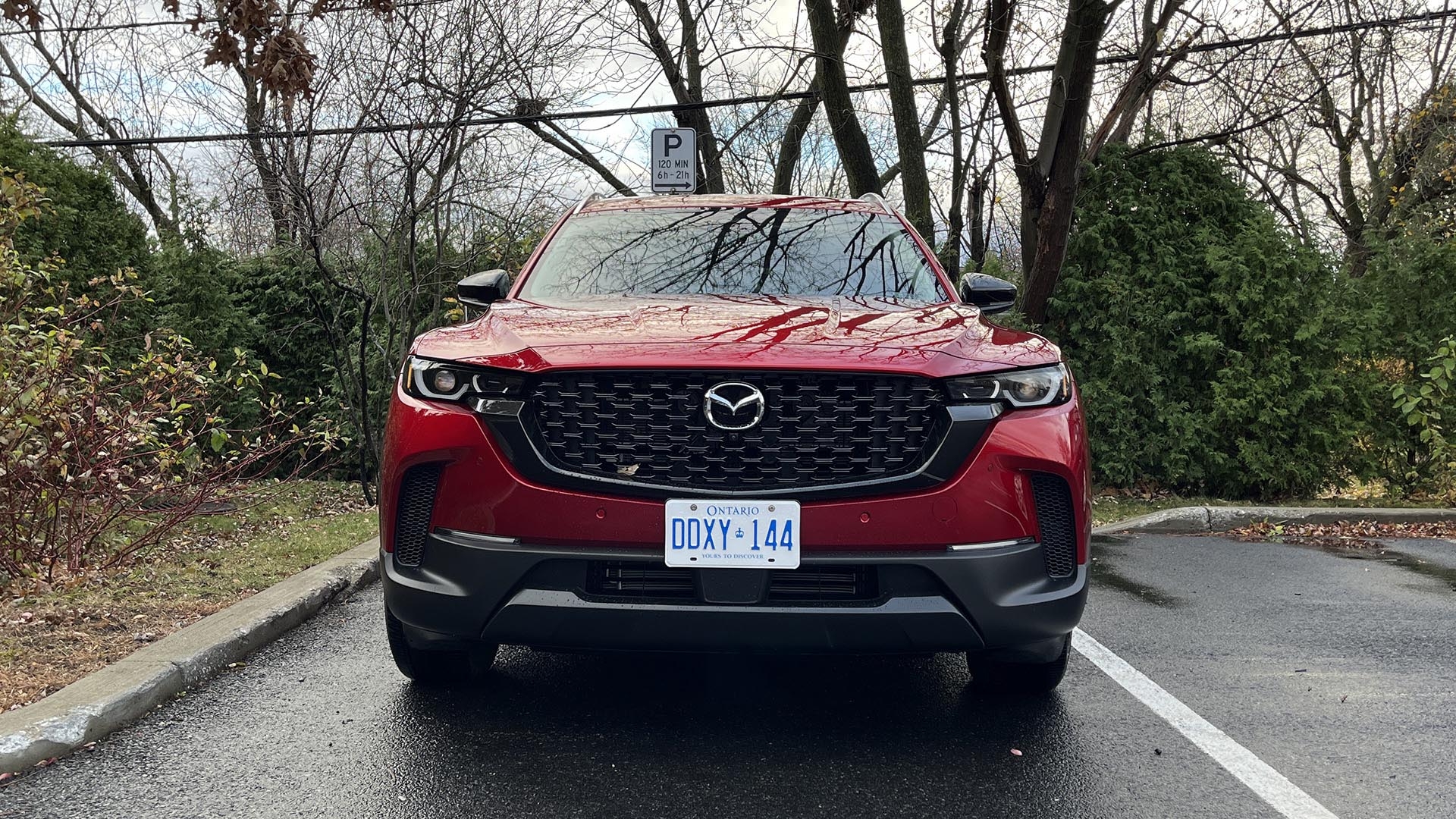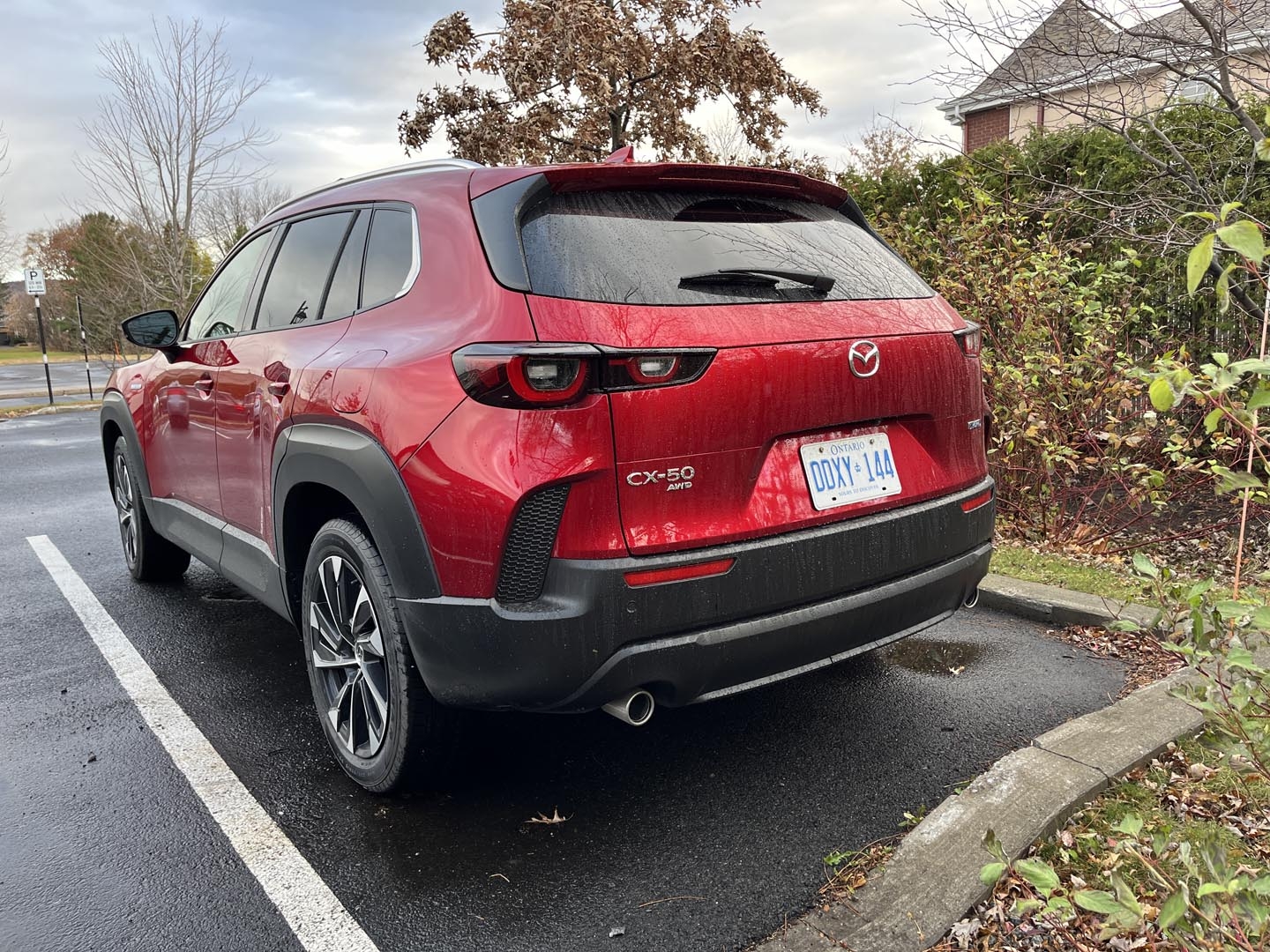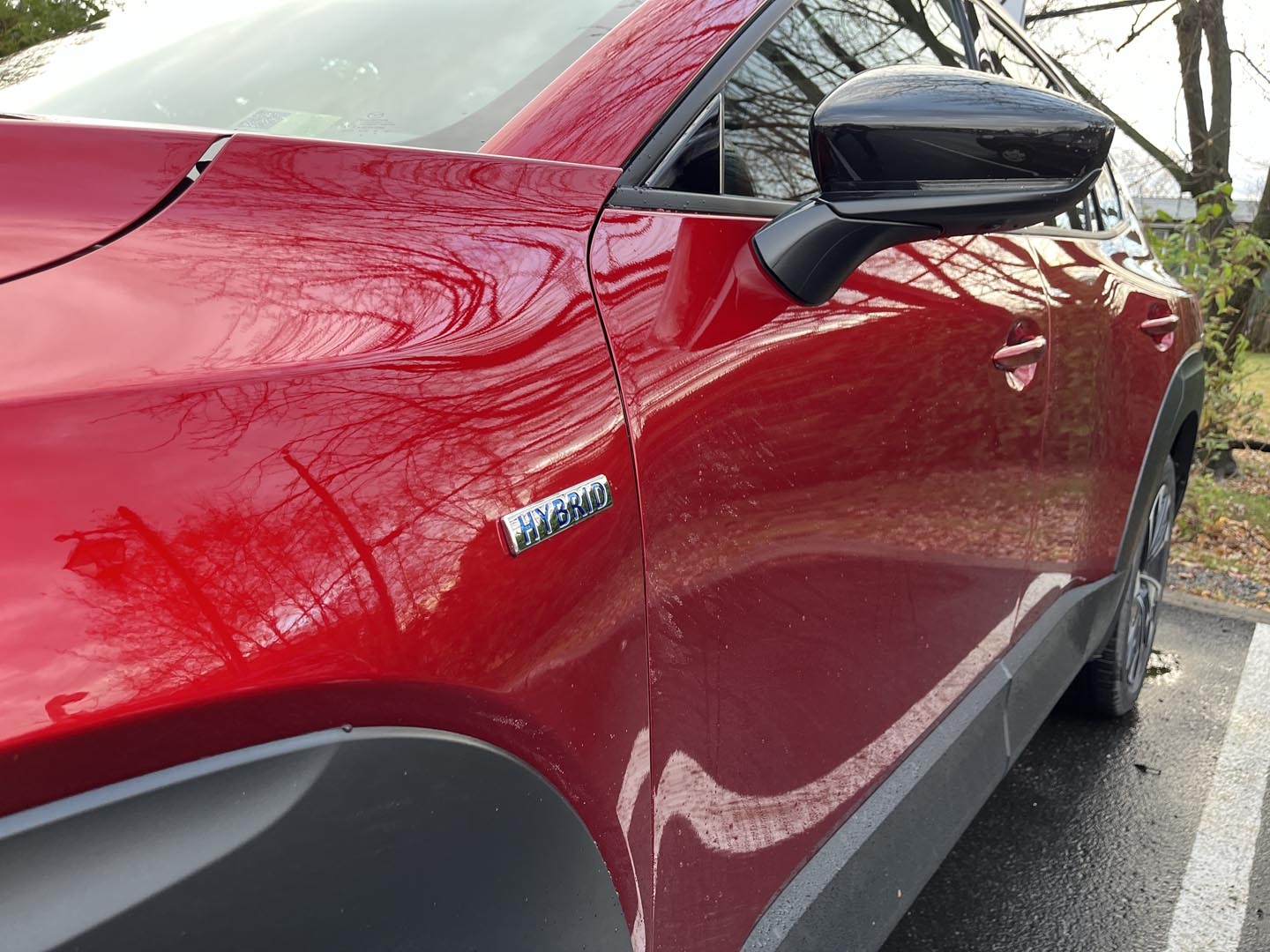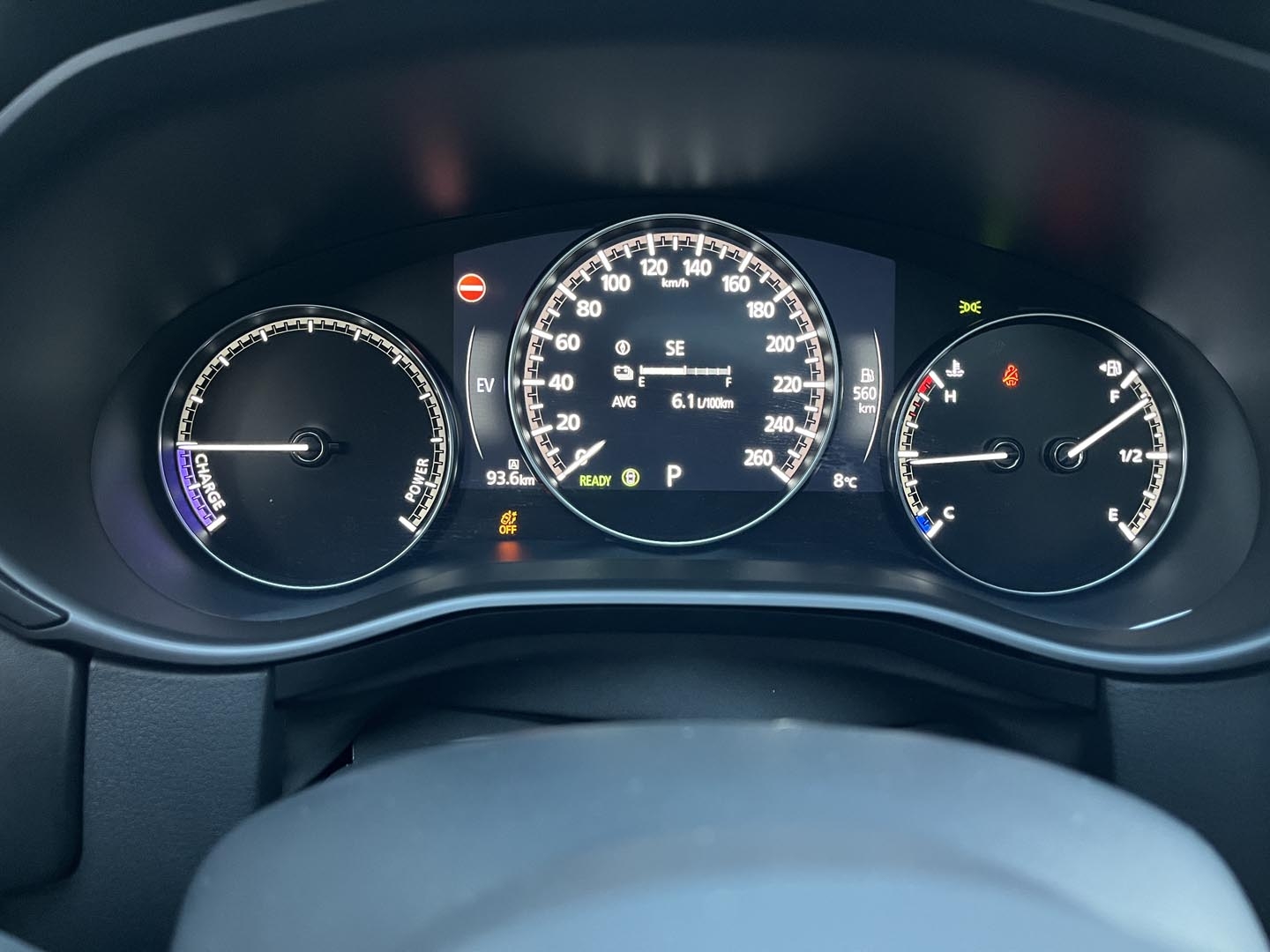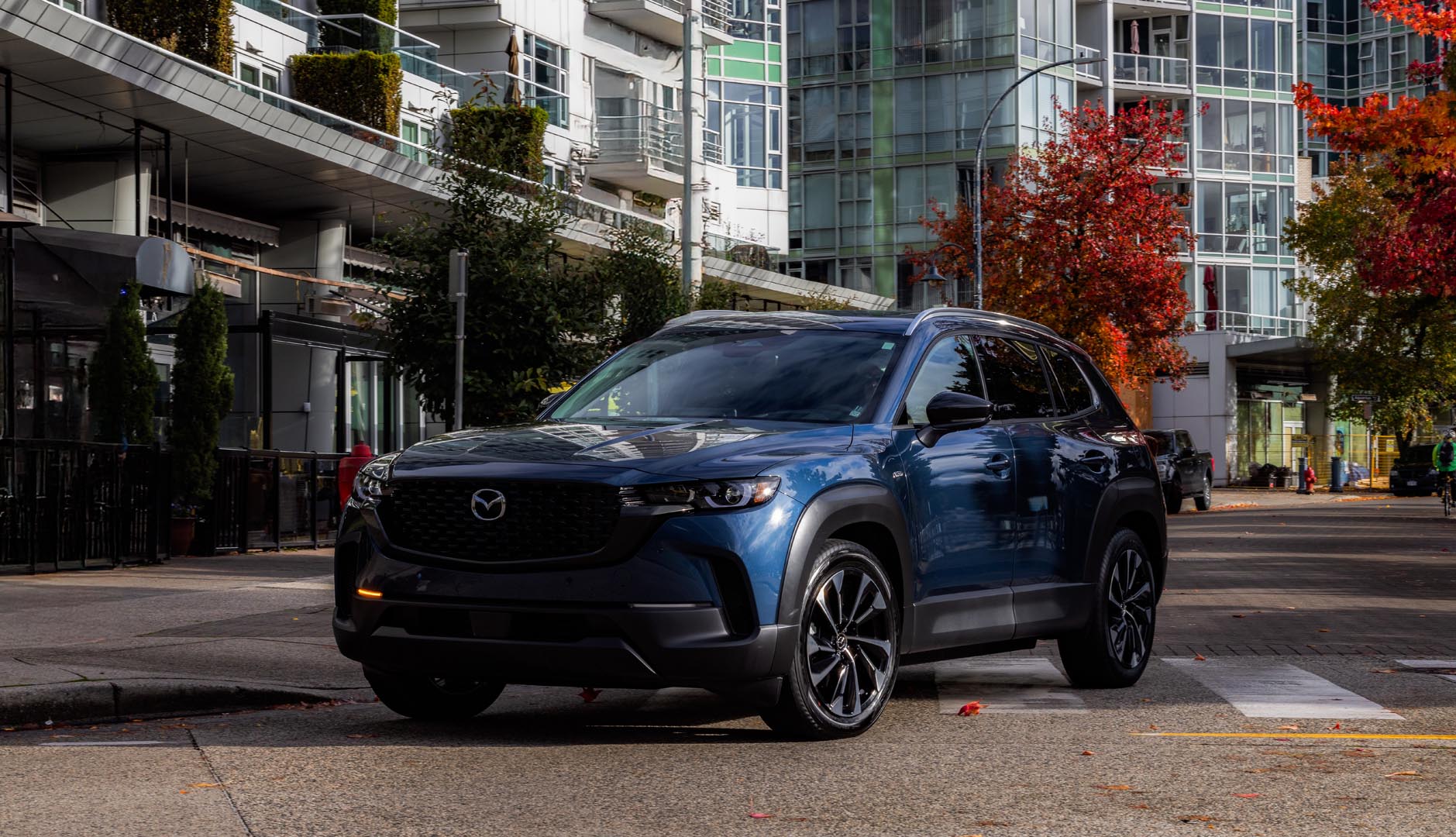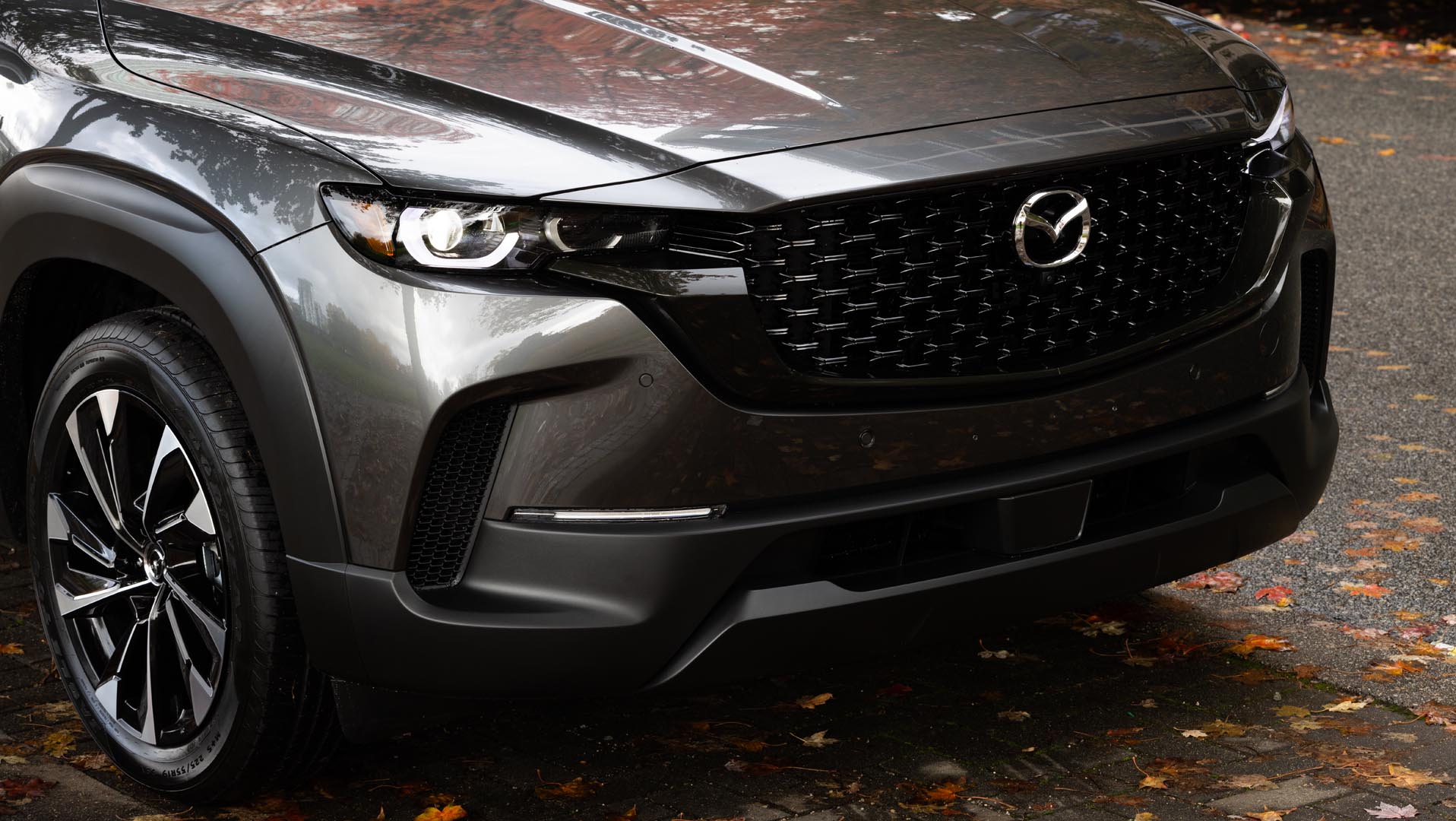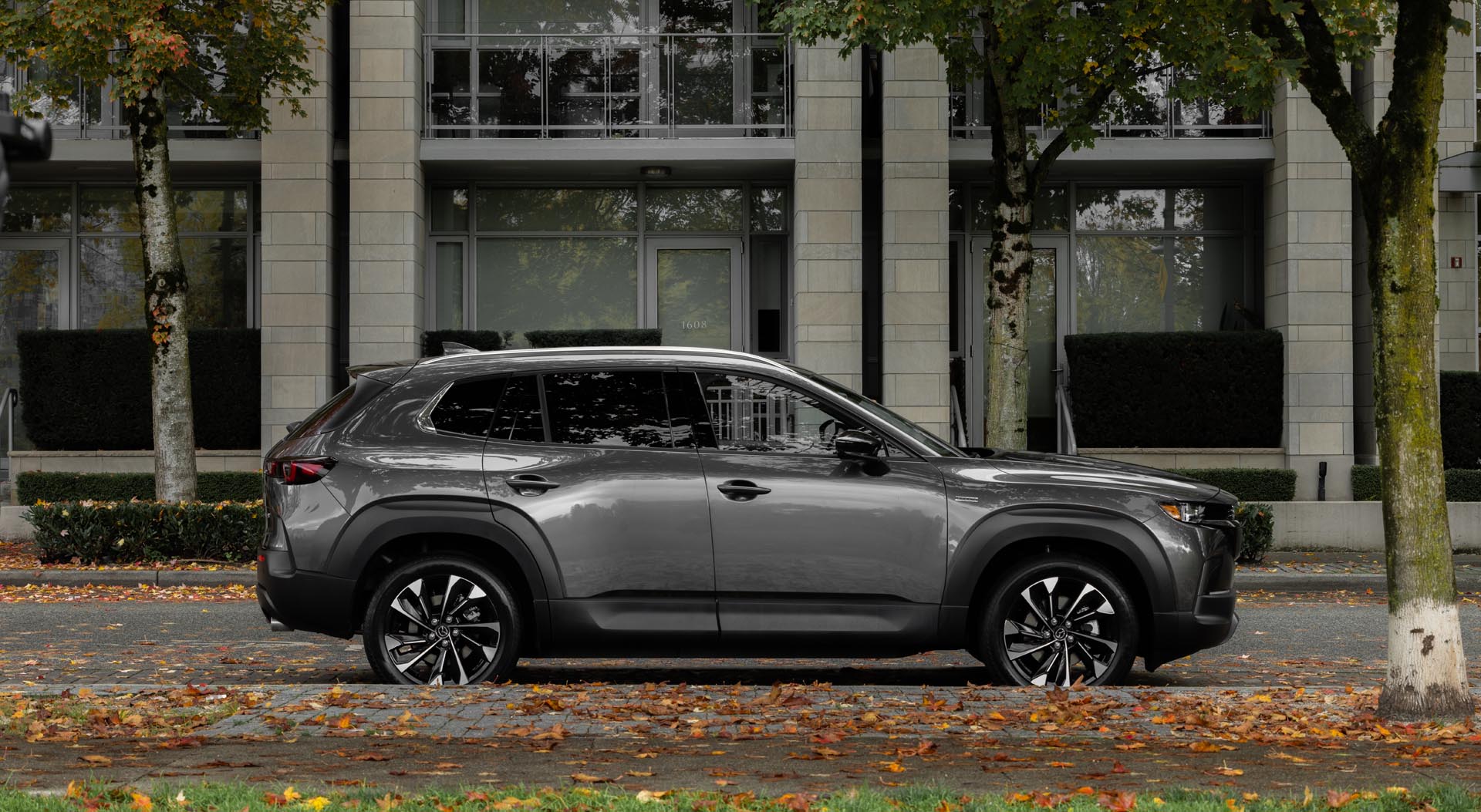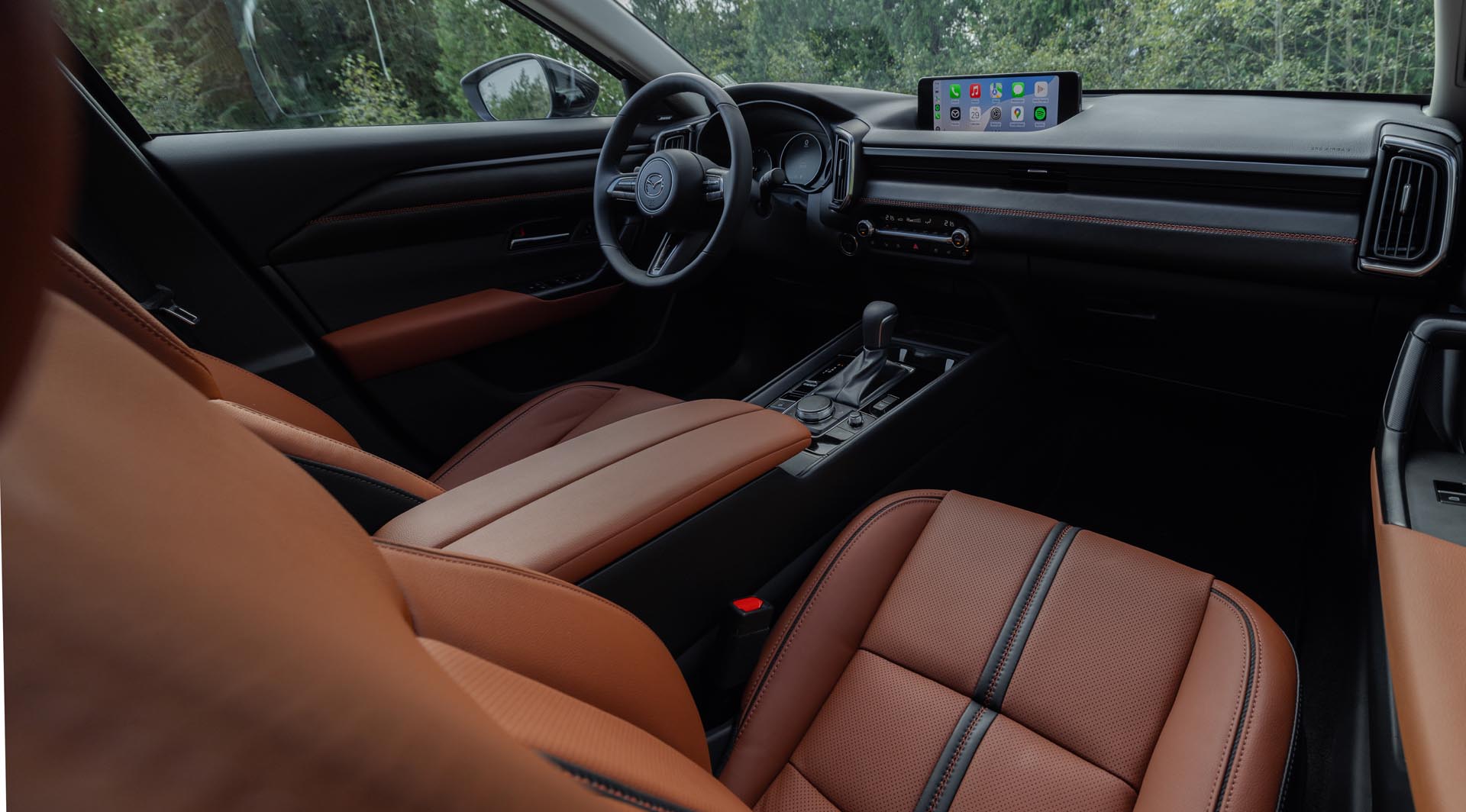
MAZDA CX-50 hybride 2025
The middle ground solution
Pros and cons
Pros
- Low fuel consumption
- Competent handling
- Precise and well-geared steering
- Careful fit and finish
- Very good expected reliability
Cons
- Hybrid engine noisy when pushed
- Suspension sometimes stiff
- Cabin tight for the segment
- Unusual infotainment system
- Subpar visibility
Overview
Mazda has been announcing this one for a long time. Nearly three years after the launch of the gasoline-powered CX-50, the hybrid model has finally hit our shores. It is the third milestone in the small Japanese manufacturer's electrification strategy, after the CX-70/CX-90 PHEV duo and the all-electric MX-30 (had you forgotten about it?).
While the mechanics of the last two series are 100% Mazda, the CX-50 Hybrid is a different story, as it inherits the same Toyota engine as the Camry, Grand Highlander, RAV4 and Sienna, to name just a few models. The CX-50 therefore becomes the first Mazda product equipped with a continuously variable transmission and an all-wheel drive system with no mechanical link between the two running axles.
The rest of the vehicle remains very similar to the strictly gasoline-powered variants of the model, although not quite identical. Mazda had to slightly modify the body to accommodate the new powertrain, in addition to reorganizing the instrumentation. Furthermore, a hybrid-only Kuro version slots in between the usual GS-L and GT, while the Meridian remains exclusively associated with Mazda's turbocharged gasoline engine.
Many drivers have learned in recent months that you sometimes have to wait (a very) long time to take delivery of an electrified Toyota. This situation did not seem to worry Mazda Canada's media relations managers during the media launch of the CX-50 Hybrid in early November 2024. One of them even invited customers put off by the wait for a RAV4 Hybrid to visit a Mazda dealership!
Initially, the manufacturer plans to devote about 15% of the CX-50 production to the dual-motor version. It could then increase the rate depending on demand and capacity at the Huntsville, Alabama plant, which assembles the crossover alongside the Toyota Corolla Cross.
See the Evaluation section for our experts' opinion, in five highlights.
Verdict
Mazda made a great move by turning to its partner Toyota to power the CX-50 Hybrid. At a relatively low cost, this marriage sets the CX-50 apart from its natural rival, the Subaru Outback, which is still only available with gasoline engines. This pairing also preserves the active character so dear to Mazda, as long as you accept the seamless operation of the continuously variable transmission. As a bonus, reliability promises to be very good, thanks to the positive history of both brands.
However, some people might complain about the rather firm suspension, and others might feel "invaded" in the somewhat tight cabin. Inseparable from recent Mazdas, these traits demonstrate once again the importance of a good test drive before signing the contract.
Evaluation
A proven and promising hybrid engine
"Finally, a Toyota hybrid with steering wheel feel!" That's the first thing that came to mind when driving the CX-50 Hybrid. This is admittedly a simplistic judgment, since the vehicle has nothing else from Toyota except its powertrain. Still, it sums up the cross between Mazda's renowned driving dynamics and Toyota's excellent gasoline-electric engine. The CX-50 Hybrid doesn't have the punch of a turbo model, but its engine provides more than respectable performance at all revs.
It's true that the continuously variable transmission is a bit jarring in a Mazda, especially since it doesn't simulate any gear changes during acceleration. On the other hand, its fully electronic operation guarantees an immediate response and avoids any rubber-band effect.
Above all, the dual-engine variant promises to consume between 30% and 35% less fuel than the other CX-50s in mixed city-highway driving. According to the trip computer, our almost new test model swallowed 6.1L/100km during our first contact, conducted on flat secondary roads in Montérégie. Only a complete evaluation, punctuated by our own calculations, will validate this first very promising observation.
Handling above all
The hybrid engine adds 30kg to 80kg to the weight of the CX-50. All in all reasonable, this surplus does not alter the road handling in any way, which remains relatively sharp for the category. The body leans progressively in turns, where the steering allows for precise and direct guidance. Its well-geared assistance transmits a certain amount of feedback to the steering wheel, something rather rare in an SUV.
Directional stability seemed imperturbable to us at cruising speed, even in heavy rain accompanied by sustained winds. In addition, the rear axle faithfully follows the trajectory even on a bumpy road. This is all the more impressive since a torsion beam connects the two wheels, instead of the independent suspension that equips all the CX-50’s rivals.
The secret of this rigor is quickly revealed, however, in the form of much firmer damping than that of a Subaru Outback, for example. This configuration may please sports driving enthusiasts, but it may surprise anyone who has not driven a Mazda recently. In addition, the brake pedal requires the same unexpected effort as in other CX-50s despite the presence of the regenerative system linked to the hybrid engine.
No more spacious than it needs to be
Agile, stylish, well-built and carefully finished as they are, recent Mazdas all share a somewhat tight cabin compared to the competition. The CX-50 doesn’t lack headroom and legroom for four adults, but with narrow glazing, steeply raked windshield pillars and a very wide centre console it feels like the cabin is closing in on the occupants. The atmosphere is noticeably brighter in a Honda or Subaru, and visibility is superior.
The driving position is nevertheless much better than in a CX-5, thanks to a longer centre armrest, a better-placed footrest and an elongated seat in the CX-50. The latter also reserves more space for long objects in the trunk, but the CX-5 offers more cargo volume due to a higher ceiling.
Obsolete screens
It's been more than six years since Mazda last updated its multimedia system and instrumentation template. It shows. The dials display all the information required in a hybrid model, but it's far from the diversity of information or the techno vibe expected in 2025.
As for infotainment, several analysts criticize the presence of a knob on the console as the main control. However, you get used to it fairly quickly, and people who are allergic to it can now activate the touch function even when the vehicle is moving. It's rather the complex structure of the menus, the few items accessible on the main function pages and the high number of manipulations required that betray the age of the system.
Fortunately, the rest of the controls are impeccable, be it the HVAC switches, the steering wheel buttons or the classic gear lever.
Clever pricing
Mazda did its homework when establishing the prices of the CX-50 Hybrid. An entry-level GS-L version retails for $3000 more than the same variant equipped with Mazda’s four-cylinder gasoline engine. According to the combined city-highway fuel consumption rating published by Natural Resources Canada for both models, a person who drives 20,000km per year during a four-year lease would recover the difference in gasoline as soon as the average price at the pump reached $1.69 per litre. With six-year financing, the purchase would become profitable starting at $1.62 per litre.
The acquisition of a GT Hybrid model pays for itself even more quickly when compared to a GT Turbo version, which costs only $500 less before taxes and interest charges. However, the combination of the turbo engine and the traditional six-speed automatic transmission provides more performance and feel than the tandem of the hybrid engine and the continuously variable transmission. One thing is for sure, there is no shortage of options for those seduced by the dynamic qualities of the CX-50.
Safety features
- Antilock brakes with electronic brake-force distribution and brake assist
- Stability and traction control
- Hill-start assist
- Front airbags
- Front knee airbags
- Front side airbags
- Side curtain airbags
- Front and rear lateral seat belts with pretensioners
- Five adjustable head restraints
- Backup camera
- Tire pressure monitoring system
- Forward collision warning
- Front automatic emergency braking
- Lane departure alert with automatic steering assist
- Active lane control
- Blind-spot monitoring system (with automatic steering assist on GT)
- Rear cross-traffic alert (with automatic braking on GT)
- Auto high beam
- Adaptive cruise control
- Driver attention monitor
- Front and rear parking sensors, surround-view monitor, rear automatic emergency braking and front cross-traffic alert (standard on GT, not available on GS-L and Kuro)
Crash test results
National Highway Traffic Safety Administration
Overall score: 5/5
Frontal impact: 5/5
Side impact: 5/5
Rollover resistance: 4/5
Insurance Institute For Highway Safety
Moderate overlap frontal impact: 4/4
Small overlap frontal impact: 4/4
Side impact: 4/4
Top Safety Pick+
